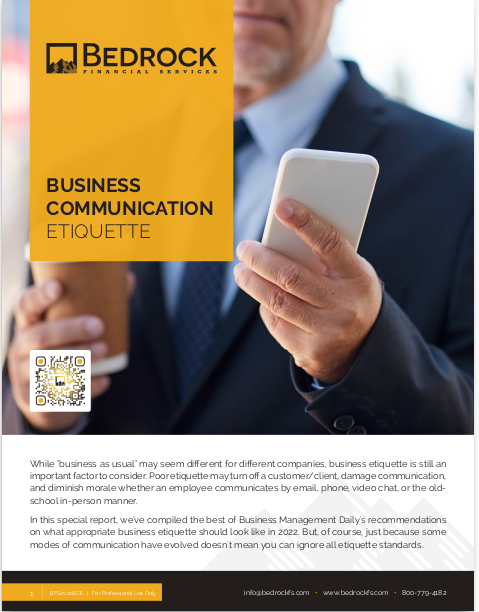Key Takeaways
-
Your best testimonials aren’t the ones with the most praise—they’re the ones with the most clarity and relevance to your next client’s journey.
-
Story-driven testimonials feel authentic because they focus on transformation, not transactions. With the right structure, you can gather these stories without sounding like you’re fishing for compliments.
Why Most Testimonials Fall Flat in 2025
In 2025, attention spans are shorter than ever, and trust is harder to earn. That’s why vague testimonials like “John is great to work with!” do little to build confidence with new prospects. They’re too general, too passive, and ultimately too forgettable.
Today’s clients want proof—but not just in the form of credentials or numbers. They want to hear real experiences that sound like their own. The problem is, most financial professionals are still asking for testimonials the same way they did a decade ago: awkwardly, reactively, and without a plan.
You don’t need dozens of testimonials. You need a handful of real stories that follow a narrative arc—one that starts with a challenge and ends with a clear outcome.
Shift from Praise to Progress
What makes a testimonial powerful isn’t how much someone likes you. It’s how much their situation improved because of what you helped them do. Focus your collection strategy around these types of statements:
-
“Before we met…”
-
“What surprised me most…”
-
“What I learned through the process…”
-
“If you’re on the fence…”
When a prospect hears those types of sentences, they stop seeing the testimonial as a review and start hearing it as a preview of what they could experience.
You don’t need to over-script this. You just need to guide the person toward telling their story in a way that connects. Ask the right questions. Set the right tone. And above all—be intentional.
The Three-Part Testimonial Framework That Works
To make testimonial-gathering easier and more consistent, use a three-part structure:
1. The Problem
This part anchors the story. It shows what was at stake before they worked with you. Try prompts like:
-
“What was your biggest financial concern before we spoke?”
-
“Had you worked with someone else before? What was missing?”
You’re trying to create a moment of recognition. The more specific the situation, the more emotionally relatable it becomes.
2. The Process
This gives context to what it’s like to work with you. It helps the next client understand your communication style, your process, and what made the experience different.
-
“What did you notice about our first meeting?”
-
“How did the process unfold, and what stood out to you?”
Here’s where you highlight what makes your approach human and approachable.
3. The Payoff
This is the part most people skip to—but without context, it falls flat. Once you’ve covered the problem and process, the result actually feels earned.
-
“What changed for you as a result of our work together?”
-
“How do you feel now compared to when we started?”
Don’t force people to speak in metrics—let them speak in feelings and shifts. A strong outcome doesn’t always mean a financial figure. Sometimes it’s peace of mind, regained time, or clarity in decisions.
Make Testimonial Requests Feel Natural, Not Forced
If you wait until the end of your working relationship to ask for a testimonial, you’ve waited too long. The best time is often during a breakthrough moment—when the value you’ve provided is fresh and top-of-mind.
Here are a few ways to make the request feel seamless:
-
After a positive check-in, say: “You just said something that really captured the value of our work. Would you be open to letting me use that in a client story?”
-
At a milestone point, say: “We’ve made great progress—would you mind sharing what this process has meant for you? I’m working on some new resources for prospective clients.”
-
In a follow-up email, use: “If you’re comfortable, I’d love to hear what stood out most to you about our time working together.”
These aren’t transactional asks—they’re conversational bridges.
Use the Right Format for the Right Medium
You don’t need every testimonial to be in the same format. Think about how your clients engage with your content and adjust accordingly:
-
Website: Use written stories with names and locations (with permission). Break them into clear sections: challenge, experience, result.
-
Social Media: Use short quotes that highlight a key transformation. Overlay them on branded graphics.
-
Emails: Feature short snippets as soft proof under your main message, especially in nurture sequences.
-
Video: If possible, record Zoom calls with permission and edit a few seconds of authentic reactions or reflections.
Each medium serves a different level of trust-building. Keep your audience in mind.
What to Avoid When Asking for Testimonials
Just as important as what to include is what not to do. Avoid these common mistakes:
-
Don’t hand them a script. You can guide structure, but authenticity dies the moment you force phrasing.
-
Don’t pressure with language like “It would really help me out if…” That puts the emphasis on you—not the impact they experienced.
-
Don’t generalize. A testimonial that says, “They’re amazing!” may sound nice but tells the reader nothing about the journey.
-
Don’t collect and forget. Rotate, refresh, and revisit your testimonial library every 6–12 months to keep it aligned with your evolving client base.
How to Handle Compliance Concerns in 2025
As of 2025, testimonial usage is still governed by regulations that vary based on the services you offer. If you’re a financial advisor subject to SEC or FINRA rules, make sure:
-
The testimonial does not promise results.
-
Any compensation for testimonials is disclosed.
-
You maintain documentation of the client’s permission to use their words or image.
When in doubt, consult a compliance officer before using testimonials in public-facing material. But don’t let fear stop you from collecting them. With the right systems, you can stay compliant and compelling.
Make It Easy for Clients to Share Their Story
If you want better stories, make it easy to tell them. Consider creating a branded feedback form or email template with a few open-ended prompts. Example:
-
What was your situation like before we worked together?
-
What changed as a result of our work?
-
Would you recommend this experience to someone else?
You can also use follow-up calls to capture these responses in real-time and transcribe them later with permission.
And if someone is uncomfortable being quoted directly, ask if you can summarize their experience anonymously.
The Best Testimonials Do What Sales Copy Can’t
Sales copy can position you as credible. A story from a real client proves you are.
Your testimonials don’t have to sound flashy. They just have to sound true. And in 2025, where AI-generated content is everywhere, truth and transparency are more powerful than polished claims.
A few stories that show how someone felt lost, then clear—hesitant, then relieved—will do more for your credibility than any self-description ever could.
Turn Stories Into Strategy
Your testimonials aren’t just nice-to-haves. They’re conversion assets. But they only work if you:
-
Collect them intentionally
-
Organize them clearly
-
Refresh them regularly
-
Match them to specific services or audiences
Don’t let them gather digital dust. Instead, use them in:
-
Discovery call prep
-
Proposal decks
-
Service pages
-
Educational webinars
-
Email campaigns
Each quote becomes a bridge from doubt to belief—when you place it with purpose.
Your Future Clients Want to Hear From Your Past Ones
The story that finally gets someone to take action might not come from you. It might come from the client who sat where they are now, unsure, skeptical, or overwhelmed—and who now says they’re relieved they made the leap.
At Bedrock Financial Services, we give you the tools, templates, and automation to collect testimonials at the right time and use them with compliance in mind. You don’t need to be a storyteller. You just need the right stories—and we can help you get them.
Sign up today to start turning your client experiences into powerful tools for growth.







